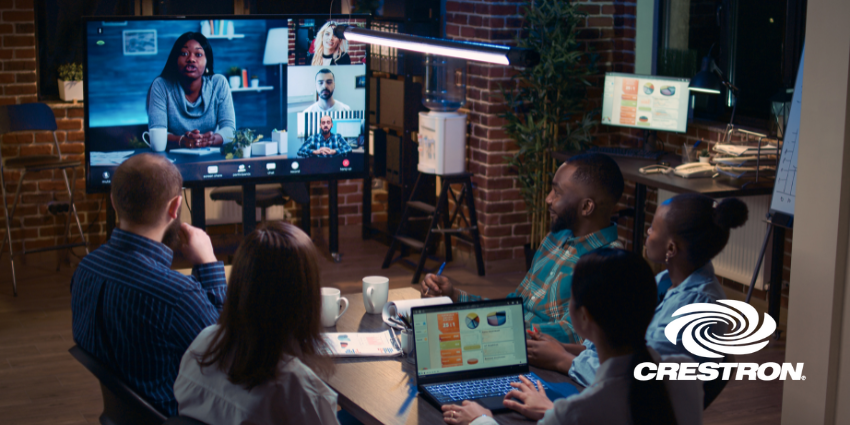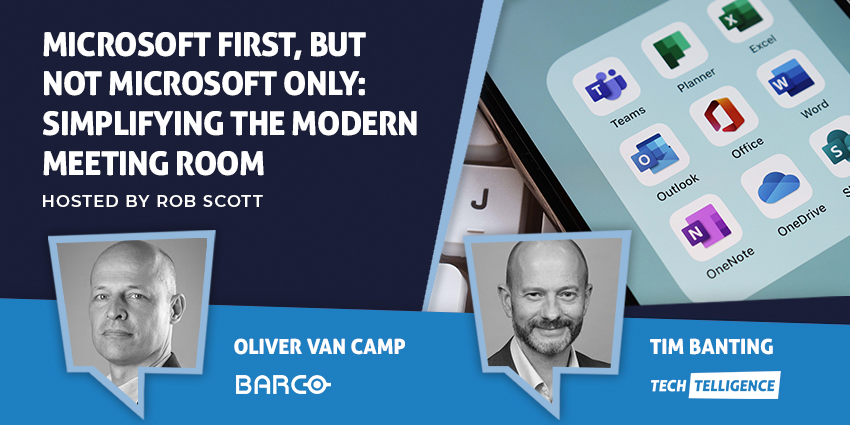For decades, IT and AV leaders were largely judged by a primary metric: reliability. Systems needed to work. Meetings had to stay online. Uptime was the measure of success. However, as hybrid work has transformed what it means to “show up,” technology now plays a far deeper cultural role, one that touches on inclusion, trust, and the very fabric of organizational life.
The shift has been rapid. A few years ago, IT teams were the silent backbone of business continuity. Today, they’re being asked to solve the most human challenges in the workplace, encompassing connection, engagement, and equity. “Executive leaders are turning to IT and saying, ‘Hey, I need your help solving this problem,’” said Brad Hintze, Executive Vice President of Global Marketing at Crestron. “And that problem is people engagement — keeping people productive and connected.”
Hybrid collaboration has reframed technology as the primary interface for how people see, hear, and perceive one another. Whether in a global boardroom or a weekly stand-up, the quality of that experience now defines how employees feel about their leaders, their teams, and their company.
When Every Pixel and Sound Wave Shapes Perception
Perception, presence, and participation have become the currencies of the hybrid era. In an ecosystem where colleagues often meet only through a lens, poor audio or grainy video can subtly erode trust and confidence.
Research highlighted in Proceedings of the National Academy of Sciences reinforces this link: people subconsciously associate clear audio and well-framed video with professionalism, attentiveness, and respect. “How people are heard directly impacts how they’re perceived,” explained Hintze. “Audio is the most fundamental layer, and video comes right after. Putting your best foot forward with high-quality AV is incredibly important today.”
This extends beyond aesthetics. Crisp sound and sharp visuals communicate intent; that people and their contributions matter. For leaders addressing teams across continents or employees pitching ideas to executives, the fidelity of AV has become the new body language. Intelligent AV, in this sense, functions as the modern professional’s “virtual power suit,” shaping perception before a single word is spoken.
Meeting Equity Isn’t About Fairness — It’s About Flow
“Meeting equity” has become a buzzword, but it’s arguably often misunderstood. True equity isn’t about perfect symmetry or identical layouts. It’s about creating frictionless environments where everyone, regardless of their position, can contribute naturally.
“I wouldn’t say organizations get it wrong exactly,” said Joel Mulpeter, Senior Director of Product Marketing at Crestron. “But the focus needs to be on usability. Meeting equity isn’t just about everyone being able to see and hear each other. It’s about making the room operation seamless for whoever’s using it, whatever the use case.”
This human-centric approach begins with understanding how people actually use spaces. A one-to-one huddle demands a different experience than a training session or hybrid workshop. “Instead of focusing purely on equity,” added Hintze, “we focus on what’s most effective for enabling collaboration in each space.”
That means deploying technology that quietly serves the workflow rather than distracting from it. Sometimes, that’s full automation. At other times, it’s providing users with the tactile confidence of a 10-inch touch panel. The ultimate goal is to make every participant feel equally seen, heard, and empowered, not because the system insists on equality, but because it’s designed for effectiveness.
Collaboration as Culture: The IT Leader’s Expanding Circle of Influence
With hybrid work now a constant organizational reality, IT and AV leaders find themselves collaborating with departments they previously rarely interacted with, including HR, facilities, finance, and even marketing. Each has a stake in the employee experience, and each now looks to IT as a partner in shaping it.
“It starts with asking questions,” said Mulpeter. “‘How do you intend to use meeting spaces? How do you plan to collaborate with employees, both in-person and remote?’ Once you understand the workflow, you can carve out an approach.”
But, as he noted, scaling that approach is where complexity grows. Creating a single well-designed hybrid room is one thing; replicating it across 30 global sites, while adapting to local working cultures, is another. “Constant iteration and ongoing dialogue with those departments — your internal ‘customers’ — are crucial,” Mulpeter added.
This dialogue is elevating IT’s role within the business. The same leaders who once monitored servers now influence the design of workplaces, the psychology of meetings, and even retention strategies. A high-quality hybrid experience signals that employees matter, and when people feel seen and heard, they stay.
The Future is Intelligent Experiences That Understand People
As hybrid collaboration matures, Crestron’s focus has shifted decisively from functionality to empathy. Its roadmap is built around the abiding principle that technology should understand human behavior, not dictate it.
“You’ve seen major investment in applying AI to deliver intelligent experiences,” said Hintze. “It’s not about using technology just because we can. It’s about understanding human behavior in meetings and designing technology that supports that.”
Features like presenter tracking, speaker tracking, and group framing are not gimmicks but informed by how people naturally interact. These innovations embody a subtle but profound change in how AV is conceived, not as a tool, but as an enabler of human connection.
In that sense, Crestron’s approach mirrors the new reality of IT and AV leadership itself. Technology has moved beyond uptime. It’s now about fostering trust, inclusivity, and belonging, values that define successful hybrid cultures as much as any business metric.
The Cultural Architecture of Collaboration
Hybrid work has elevated technology to be the architecture of culture. Every sound picked up by a microphone and every frame captured by a camera contribute to how colleagues perceive one another.
As organizations seek to attract and retain talent in an era of fluid work, IT and AV leaders have become the custodians of a sense of belonging. Their influence now extends far beyond technical performance and into the heart of how people feel connected at work.
With Crestron, they have a partner that understands that connection is the ultimate deliverable. Through intelligent, human-centric AV, Crestron helps organizations design workplaces where technology no longer divides but unites.
Find out how Crestron can help your organization build culture through collaboration here.







